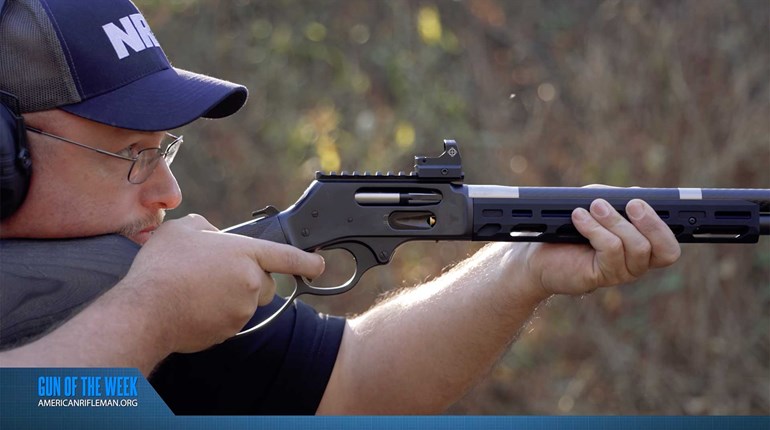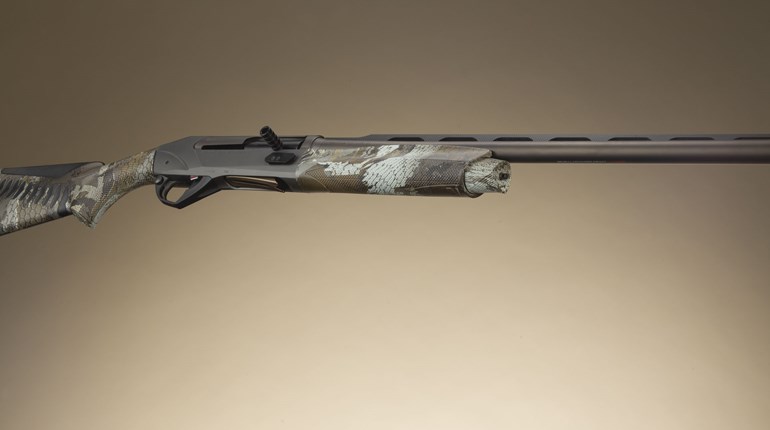
In November 1965 I was 10 and considered too young to go deer hunting with the men in my family. I spent opening morning in my room, mad as hell and impatiently waiting for the gang to show up for lunch. They were late and excited about a buck that one of them had jumped on the way out to the truck. That was back when Vermont was full of deer and even more full of deer hunters, and the buck had run past another bunch of hunters gathered for lunch on the edge of a large field. They emptied their guns at the deer and never cut a hair.
The table chatter centered on a cartridge case Dad had found in the other gang’s pile of empty brass. As the case was passed around nobody had ever heard of it, until it finally got to me. I had ordered every gun catalog and read every hunting magazine I could get my hands on, and I knew what it was. Introduced in 1964, the .444 Marlin pushed a 240-grain bullet to a muzzle velocity of 2350 fps. At that time it was the most powerful lever-action cartridge on the planet.

While the .444 Marlin and its namesake Model 444 saw some success in the deer woods, the truth is by the mid-’60s the era of the lever-action hunting rifle was already over. The .444 Marlin was introduced smack in the middle of Magnum Mania, when hunters were seeing belted magnum cartridges introduced one after the other. It stands to reason the .444 Marlin never lit up the market. Those who bought rifles chambered for it sang its praises, but nobody listened.
When Remington bought Marlin in 2007 and moved production to Remington’s factory in Ilion, N.Y., the resultant disaster nearly ended the Marlin brand. The facility struggled for years to build quality rifles. It took even longer for the market to trust the Marlin brand again. Persistence won the day and Marlin came back, but the Model 444 did not.
Then somebody came up with the idea of letting deer hunters in shotgun-only areas use straight-wall rifle cartridges. It quickly caught on, and state after state changed its regulations. Right now, straight-wall rifle cartridges are among the fastest growing markets in the industry.

The .45-70 Govt. and .450 Bushmaster are likely the most popular straight-wall rifle cartridges, at least for now. In terms of external ballistics the .444 Marlin is better than both of them. Hornady has Superformance ammo that pushes a 265-grain flat-point bullet to 2400 fps, which means it is the fastest straight-wall rifle cartridge on the market. Hornady’s other load, part of the LeverEvolution line, features an elastomer-tip FTX bullet with a ballistic coefficient of .225. While that may not be impressive to long-range rifle shooters, in this class of ammo it’s excellent. When combined with a muzzle velocity of 2325 fps, it makes the .444 Marlin the flattest-shooting straight-wall rifle cartridge in commercial production.
The trouble is, hunters can’t find much in the way of repeating rifles chambered for this cartridge. With limited delivery systems, the .444 Marlin has languished. Marlin must have noticed, because this year the company reintroduced its Model 444 lever-action to correct that situation.
Technically the new rifle is called the 444 Marlin, and it’s based on the company’s large 1895 frame used for the .45-70 Govt. A half-magazine holds four cartridges for a total capacity of five rounds. The semi-pistol grip puts a nice gentle curve in the lever, which makes it a good fit for most hands. I have a buddy, Mike Brookman, who is the size of the average Wookiee. He complains that his fingers don’t fit most lever-actions, yet he really liked this rifle. In fact he liked it so much he didn’t want to relinquish it to me and did most of the target work during testing.

The 22-inch barrel has Ballard cut rifling. In the past Marlin used its Micro-Groove rifling in its rifles. The trouble was it didn’t play nicely with cast bullets, which are popular with big-bore lever-action shooters. So the company went back to its roots with Ballard cut rifling, which has much deeper grooves.
For years, if a lever-action managed 2 or 3 MOA it was considered fine for deer hunting. In my test rifle, the average group size with Hornady LeverEvolution ammo is right on the cusp of the magic 1 MOA. The trigger pull is clean and crisp, but averages almost 5 pounds. I suspect the rifle is capable of even better accuracy with a lighter trigger. The only other issue I had was the lever would not stay locked shut. A call to Marlin had a new lever on my doorstep the next morning, and it solved the problem.
The metal is blued, and the straight-grained walnut has checkering on the grip and the fore-end. Marlin’s hallmark white circle with a black bullseye is inletted in the toe of the stock. Sling-swivel studs are included. The buttpad is thin, hard rubber. Better than a steel buttplate, I suppose, but this big boomer would be better served with a good recoil pad.
A large, durable extractor in the round bolt combined with a standing, spring-loaded ejector throws brass well clear of the gun. Marlin lever-action rifles are side-eject, with the ejection port on the right side of the receiver, which means they easily accept scopes. I installed a Leupold VX-3i 4.5X-14X-40mm on mine with Talley mounts so I could explore the long-range capabilities of the rifle.

The magazine loads through a side port on the right side of the receiver with a spring-loaded gate. The trick is to push in a cartridge until the rim catches and remains outside the port so the next round can be inserted more easily.
The hammer has a half-cock position and comes with a removable extension that allows better manipulation beneath a scope, even with gloves. There is a push-button hammer-block safety in the receiver that infuriates traditional lever-action aficionados but keeps lawyers happy. While I kind of fall into the first camp, I am reminded of a hunter-safety course I helped teach some years back. Every single kid who tried to uncock an unloaded lever-action lost control of the hammer. Perhaps the hammer-block safety is a good thing.
Fit and finish are as nice as I have seen on a modern Marlin. The rifle functions well, provides excellent accuracy for a big-bore lever-action and accepts a scope. Hunters looking for a gun that offers high performance with a straight-wall rifle cartridge should welcome the 444 Marlin.

Technical Specifications
• Type: lever-action centerfire rifle
• Caliber: .444 Marlin
• Barrel: 22″; Ballard rifling; 6 grooves, 1:20″ RH twist
• Magazine: tubular, 4-rnd. capacity
• Trigger: single-stage; 5-lb. pull weight
• Safety: two-position hammer-block
• Sights: adjustable semi-buckhorn rear, hooded front post w/brass insert; receiver drilled and tapped for optics
• Stock: semi-pistol-grip black walnut w/satin finish; LOP 13.75″
• Metal Finish: blued
• Overall Length: 40.5″
• Weight: 7.6 lbs.
• MSRP: $769; marlinfirearms.com




































